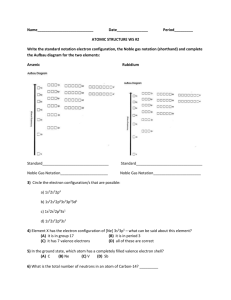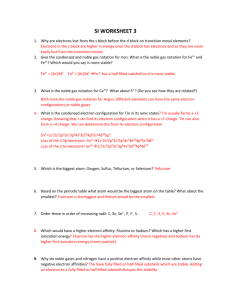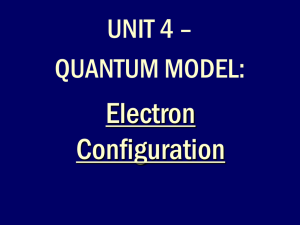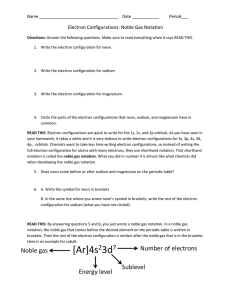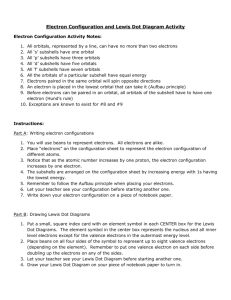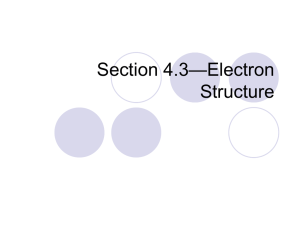si worksheet 3
advertisement
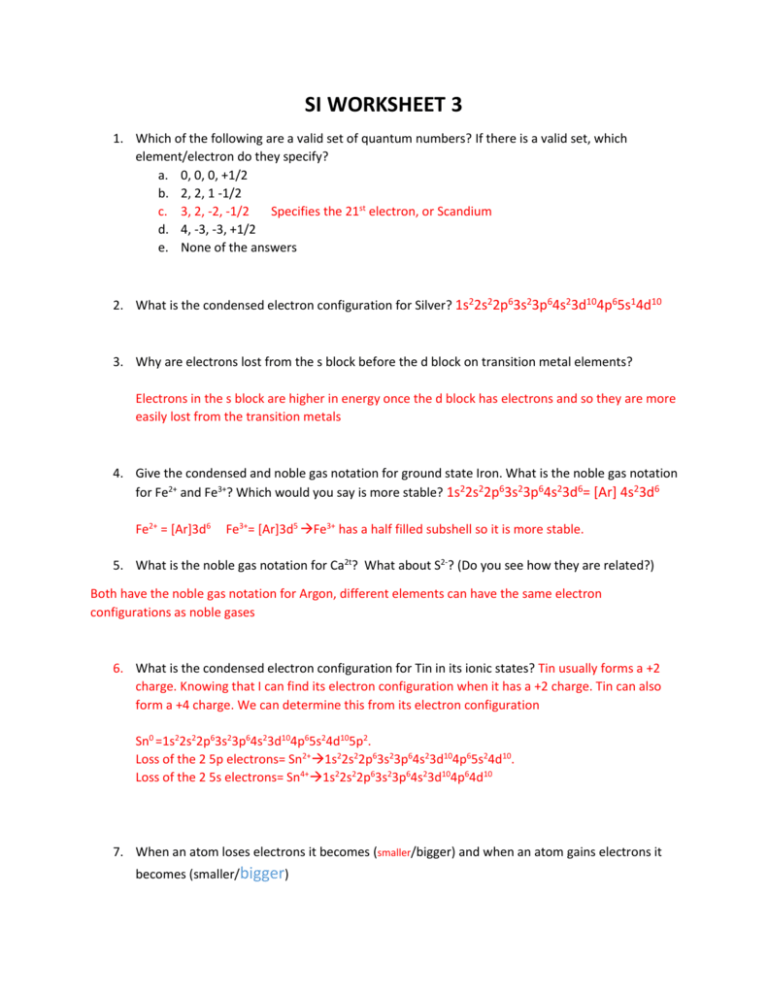
SI WORKSHEET 3 1. Which of the following are a valid set of quantum numbers? If there is a valid set, which element/electron do they specify? a. 0, 0, 0, +1/2 b. 2, 2, 1 -1/2 c. 3, 2, -2, -1/2 Specifies the 21st electron, or Scandium d. 4, -3, -3, +1/2 e. None of the answers 2. What is the condensed electron configuration for Silver? 1s22s22p63s23p64s23d104p65s14d10 3. Why are electrons lost from the s block before the d block on transition metal elements? Electrons in the s block are higher in energy once the d block has electrons and so they are more easily lost from the transition metals 4. Give the condensed and noble gas notation for ground state Iron. What is the noble gas notation for Fe2+ and Fe3+? Which would you say is more stable? 1s22s22p63s23p64s23d6= [Ar] 4s23d6 Fe2+ = [Ar]3d6 Fe3+= [Ar]3d5 Fe3+ has a half filled subshell so it is more stable. 5. What is the noble gas notation for Ca2t? What about S2-? (Do you see how they are related?) Both have the noble gas notation for Argon, different elements can have the same electron configurations as noble gases 6. What is the condensed electron configuration for Tin in its ionic states? Tin usually forms a +2 charge. Knowing that I can find its electron configuration when it has a +2 charge. Tin can also form a +4 charge. We can determine this from its electron configuration Sn0 =1s22s22p63s23p64s23d104p65s24d105p2. Loss of the 2 5p electrons= Sn2+1s22s22p63s23p64s23d104p65s24d10. Loss of the 2 5s electrons= Sn4+1s22s22p63s23p64s23d104p64d10 7. When an atom loses electrons it becomes (smaller/bigger) and when an atom gains electrons it becomes (smaller/bigger)
